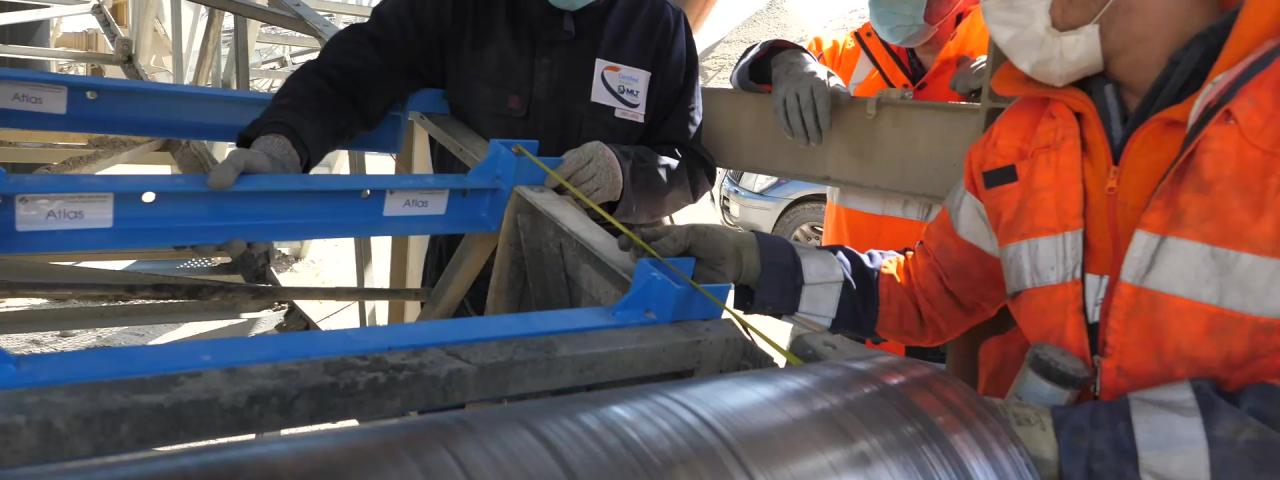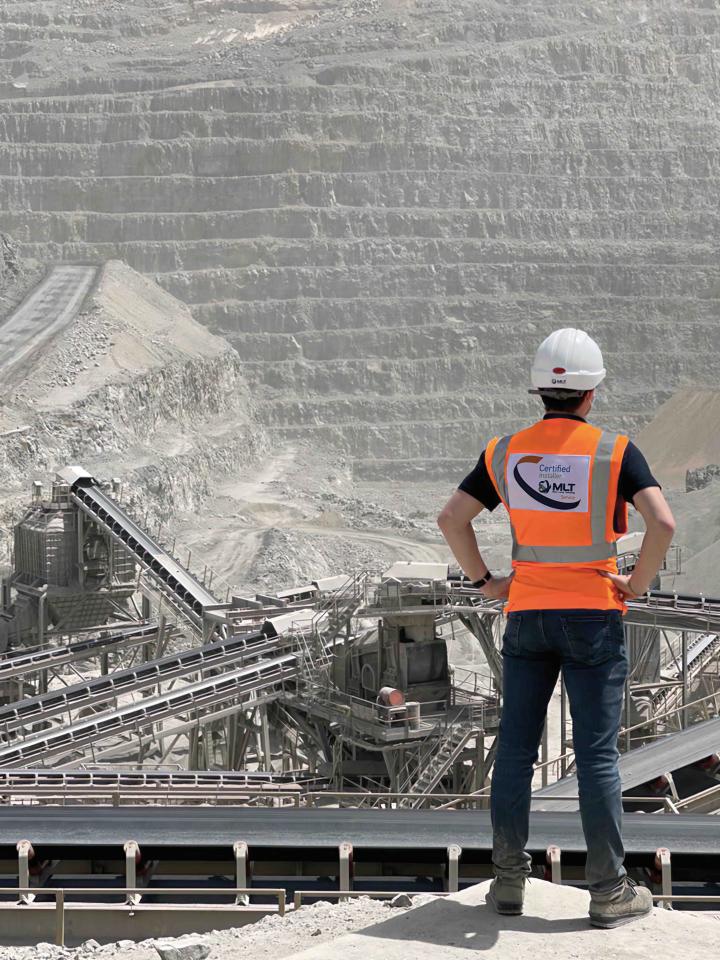

Best Maintenance Practices to Extend the Lifespan of Your Conveyor Belts
Conveyor belts are essential components in industrial operations. They ensure the continuous flow of materials goods across various sectors such as mining, logistics, and manufacturing. However, without regular maintenance, these systems can become a major source of inefficiency, downtime and unexpected costs.
This article discusses the best practices and tips for maintaining your conveyor belts. We will cover common issues and provide a structured maintenance strategy to help you keep your conveyor system operating at its best. You’ll find practical insights that will ensure your system remains in optimal working condition.
THE IMPORTANCE OF REGULAR CONVEYOR BELT MAINTENANCE
Neglecting conveyor belt maintenance can indeed lead to a variety of significant issues. Problems such as belt misalignment, slippage and material buildup can decrease efficiency and increase energy consumption. Worn or damaged belts can break unexpectedly, resulting in costly production halts and requiring expensive emergency repairs. Additionally, poorly maintained conveyors present serious safety hazards that can heighten the risks of accidents, injuries, or regulatory non-compliance.
Implementing a proper maintenance routine for your conveyor systems offers several advantages, including:
Early issue detection: Routine inspections make it easier to identify potential problems, such as misalignment or component wear, before they affect performance.
Preventing unexpected downtime: Regular maintenance reduces the risk of sudden failures, ensuring uninterrupted production and minimizing costly delays.
Extending conveyor belt lifespan: Proactive upkeep slows down wear and tear, allowing conveyor belts to operate efficiently for a longer period.
Reducing repair costs: Addressing minor issues before they escalate helps avoid expensive emergency repairs and unplanned equipment replacements.
Improving operational efficiency: A well-maintained conveyor ensures smooth material flow, reduces energy consumption, and increases productivity.
Enhancing workplace safety: Well-maintained conveyor systems are less prone to safety hazards.
AN OVERVIEW OF THE MOST COMMON CONVEYOR BELT ISSUES
Even with regular inspections, conveyor belts can experience various issues that may lead to costly repairs and operational disruptions if left unaddressed. Understanding the most common problems and knowing how to resolve them is key to ensuring the longevity and efficiency of your system.
BELT MISALIGNMENT
Belt misalignment is a significant problem that can occur due to improper loading, skewed pulleys, or damaged rollers. It can be resolved by realigning the conveyor components, ensuring even material loading, and installing self-tracking systems to keep the belt properly positioned. To learn more on how to track a conveyor belt, read our dedicated article.
BELT SLIPPAGE
One significant challenge that can greatly affect conveyor efficiency is when the belt slips off the pulleys. This issue often arises from insufficient tension, worn drive pulleys, or contamination on the belt surface. To address this, operators should regularly check and adjust the belt tension, ensure that the pulleys are in good condition, and use high-friction lagging on the drive pulleys to enhance grip.
MATERIAL SPILLAGE
Material spillage happens when bulk materials fall off a conveyor belt or spill into its mechanism. This is usually caused by misaligned belts, excessive loading, or ineffective transfer points. To better manage transfer points and reduce conveyor spillage, consider installing skirting systems and impact cradles.
DEBRIS ACCUMULATION
Accumulation of debris is a common problem for conveyor systems. Dust, dirt, and residue from the materials being transported, as well as from the surrounding environment, can gather on the belt, rollers, and pulleys. To prevent excessive buildup and ensure smooth operation, it's essential to regularly clean the belt and its surrounding components. Installing belt scrapers and effective sealing systems can also help mitigate this issue.
ROLLER SEIZURE
A significant issue that can occur is roller seizure, where idlers and rollers cease to rotate due to excessive material buildup or structural damage, among other factors. When rollers seize, they create increased friction, which accelerates wear on the conveyor belt and raises the risk of fire hazards in certain environments. Regular inspections and timely replacement of damaged rollers are essential for ensuring smooth conveyor operation.
WEAR AND TEAR
Lastly, wear and tear are inevitable in any conveyor belt system, especially in applications involving high loads or abrasive materials. Cracks, cuts, and surface deterioration can compromise the integrity of the belt, leading to unexpected failures. To prolong the lifespan of the belt and reduce unplanned downtime, it's important to use high-quality materials, perform routine inspections, and schedule preventive maintenance.
By proactively addressing these common maintenance challenges, you can ensure that your conveyor systems operate safely, efficiently, and with minimal disruptions.
CONVEYOR BELT MAINTENANCE CHECKLIST
📋 DAILY MAINTENANCE TASKS
Here are the daily verifications you should perform:
- Inspect the belt for visible damage such as cuts, crack or excessive wear.
- Check for debris or material build-up on the belt, pulleys and rollers.
- Listen for unusual noises that could indicate misaligned components or faulty rollers.
- Verify the belt’s tracking to ensure it stays centered and does not drift.
- Ensure proper belt tension to prevent slippage or excessive strain.
- Look for signs of belt slippage or material spillage
📋 WEEKLY MAINTENANCE TASKS
We recommend you perform the following checks at least once a week:
- Inspect idlers and rollers for wear, corrosion or seizure and replace faulty components.
- Examine pulleys for misalignment, surface wear or lagging deterioration.
- Check the drive system, including motors and gearboxes, for overheating, vibrations or leaks.
- Inspect loading and transfer points for spillage, uneven material distribution or worn-out sealing systems.
- Test belt cleaners and scrapers to ensure they effectively remove carryback and foreign objects.
📋 MONTHLY MAINTENANCE TASKS
Every month, schedule a maintenance checkup in order to:
- Conduct a detailed inspection of the belt and conveyor system emptied and shut down.
- Check for structural misalignment in the conveyor frame that may affect belt tracking.
- Lubricate bearings, rollers, motors and other moving parts according to manufacturer guidelines.
- Ensure proper tensioning of the belt and adjustment if necessary.
- Repair any damages as instructed by the vendor or OEM.
- Inspect all fasteners, splices, and joints for loosening or damage.
- Inspect the following components (non-exhaustive list) and replace them if needed: belt trackers, belt scrapers, drive pulley, head pulley, tail pulley, idlers, impact bed, rollers, v-belts, etc.
📋 ANNUAL MAINTENANCE TASKS
At least once a year, you should engage in the following maintenance activities:
- Observe how your conveyor system operates both with and without any load and identify any anomaly.
- Assess overall belt performance, including speed, load capacity and energy consumption.
- Conduct a complete mechanical and electrical inspection and make the necessary replacements (motor, electric components, etc.)
- Plan for major conveyor belt repairs or replacement if needed, based on wear analysis.
- Review past maintenance logs to identify recurring issues and implement long-term corrective actions.
- Check emergency stop systems to confirm they are operational and accessible.
HOW TO IMPLEMENT A SUCCESSFUL MAINTENANCE STRATEGY?
Implementing an effective conveyor belt maintenance strategy requires a structured approach that balances proactive measures with reactive responses. Here are the key steps to establish a robust maintenance framework.
DEVELOP A PREVENTIVE MAINTENANCE SCHEDULE
A structured maintenance schedule is essential to keep conveyor belts in peak condition. Preventive maintenance should be performed at regular intervals based on the system’s usage, operating conditions, and manufacturer recommendations. Daily, weekly, monthly and annual inspection checklists help ensure that no critical component is overlooked.
TRAIN PERSONNEL ON MAINTENANCE BEST PRACTICES
Well-trained staff play a crucial role in identifying and addressing conveyor belt issues before they escalate. Training should cover basic troubleshooting, belt tracking adjustments, cleaning techniques and safety procedures. Maintenance teams should also be familiar with manufacturer guidelines for belt tensioning, splicing and repair.
Want to enhance your team's skills in conveyor belt maintenance? MLT provides customized training fully tailored to your specific needs. Let’s collaborate to create your personalized training program!
IMPLEMENT A COMPUTERIZED MAINTENANCE MANAGEMENT SYSTEM (CMMS)
Advanced monitoring systems, such as vibration analysis, thermal imaging and belt misalignment sensors, can detect potential failures before they occur. These technologies provide real-time insights into equipment performance and enable maintenance teams to take corrective actions proactively rather than reacting to breakdowns.
PRIORITIZE PROACTIVE MAINTENANCE OVER REACTIVE REPAIRS
Reactive maintenance, e.g. fixing issues only after they cause a breakdown, lead to significant downtime and high repair costs. A proactive approach involves regular inspections, scheduled belt replacements and addressing minor issues as early as possible. This shift in mindset will help you reduce unexpected downtime and improve overall efficiency.
MAINTAIN PROPER DOCUMENTATION AND MAINTENANCE LOGS
Keeping detailed records of past maintenance activities, repairs and component replacements helps track the conveyor system’s health over time. Maintenance logs provide valuable data for identifying recurring issues, optimizing service intervals and planning long-term improvements. A well-documented history also aids in compliance with safety and operational standards.
USE HIGH-QUALITY SPARE PARTS AND MATERIALS
Investing in high-quality replacement parts, including belts, rollers and splices, contributes to better durability and reduces the frequency of repairs. Partnering with reliable suppliers is therefore key to maintaining the integrity of your conveyor system.
DEFINE EMERGENCY RESPONSE PROTOCOLS
Unexpected failures can still occur, even with the best preventive measures. Having a clear emergency response plan in place ensures that maintenance teams can quickly diagnose and resolve critical issues. Stocking essential spare parts, maintaining an emergency repair kit and designating response teams help minimize downtime in urgent situations.
Implementing a structured maintenance strategy that includes routine inspections, staff training and condition monitoring, can help you significantly enhance conveyor belt performance, reduce repair costs, and prevent operational disruptions.

Content
Proper maintenance of conveyor belts is crucial for maximizing their efficiency, reliability, and durability. By taking a proactive approach, you can significantly reduce downtime and operational costs. Investing in personnel training and advanced monitoring technologies will help you identify potential issues before they develop into major failures.
A well-implemented maintenance strategy not only extends the lifespan of your conveyor belts but also improves workplace safety and overall productivity. By following the best practices outlined in this guide, your business can ensure smooth operations and long-term success.
Are your installations in need of an audit? Our experts can visit your site to diagnose any issues with your conveyors. After our assessment, you will receive a detailed report with recommendations for corrective actions to enhance your productivity and optimize your maintenance costs.


